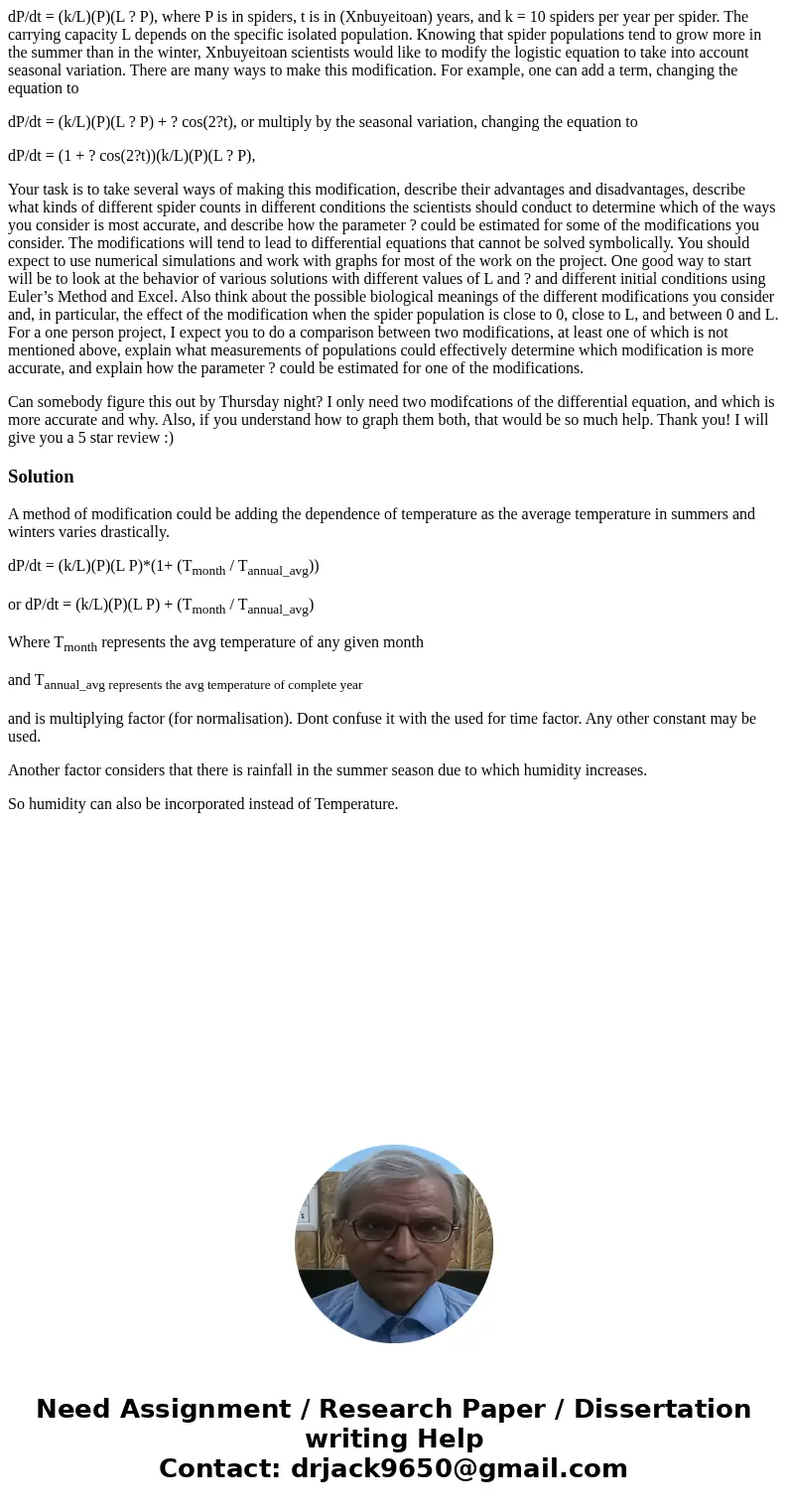dPdt kLPL P where P is in spiders t is in Xnbuyeitoan year
dP/dt = (k/L)(P)(L ? P), where P is in spiders, t is in (Xnbuyeitoan) years, and k = 10 spiders per year per spider. The carrying capacity L depends on the specific isolated population. Knowing that spider populations tend to grow more in the summer than in the winter, Xnbuyeitoan scientists would like to modify the logistic equation to take into account seasonal variation. There are many ways to make this modification. For example, one can add a term, changing the equation to
dP/dt = (k/L)(P)(L ? P) + ? cos(2?t), or multiply by the seasonal variation, changing the equation to
dP/dt = (1 + ? cos(2?t))(k/L)(P)(L ? P),
Your task is to take several ways of making this modification, describe their advantages and disadvantages, describe what kinds of different spider counts in different conditions the scientists should conduct to determine which of the ways you consider is most accurate, and describe how the parameter ? could be estimated for some of the modifications you consider. The modifications will tend to lead to differential equations that cannot be solved symbolically. You should expect to use numerical simulations and work with graphs for most of the work on the project. One good way to start will be to look at the behavior of various solutions with different values of L and ? and different initial conditions using Euler’s Method and Excel. Also think about the possible biological meanings of the different modifications you consider and, in particular, the effect of the modification when the spider population is close to 0, close to L, and between 0 and L. For a one person project, I expect you to do a comparison between two modifications, at least one of which is not mentioned above, explain what measurements of populations could effectively determine which modification is more accurate, and explain how the parameter ? could be estimated for one of the modifications.
Can somebody figure this out by Thursday night? I only need two modifcations of the differential equation, and which is more accurate and why. Also, if you understand how to graph them both, that would be so much help. Thank you! I will give you a 5 star review :)
Solution
A method of modification could be adding the dependence of temperature as the average temperature in summers and winters varies drastically.
dP/dt = (k/L)(P)(L P)*(1+ (Tmonth / Tannual_avg))
or dP/dt = (k/L)(P)(L P) + (Tmonth / Tannual_avg)
Where Tmonth represents the avg temperature of any given month
and Tannual_avg represents the avg temperature of complete year
and is multiplying factor (for normalisation). Dont confuse it with the used for time factor. Any other constant may be used.
Another factor considers that there is rainfall in the summer season due to which humidity increases.
So humidity can also be incorporated instead of Temperature.

 Homework Sourse
Homework Sourse